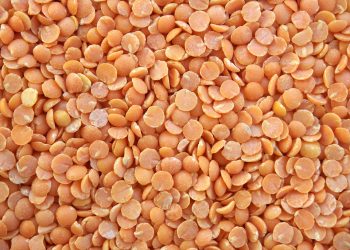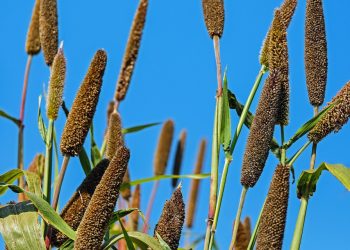Did you know that tiny green peas, often relegated to the side of your plate, could actually play a significant role in boosting your metabolism? It sounds surprising, right? But these little legumes are more than just a colorful addition to your meals; they pack a nutritional punch that can help rev up your metabolic engine. Let’s dive into five unexpected ways peas can enhance your metabolism and, ultimately, your overall health.
Contents
1. High Protein Content
Peas are surprisingly high in protein for a vegetable, containing about 8 grams of protein per cup. Protein is essential for building and repairing tissues, but it also plays a crucial role in metabolism. When you consume protein, your body expends more energy digesting it compared to fats or carbohydrates. This phenomenon is known as the thermic effect of food (TEF).
The Science Behind It
Research shows that a higher protein intake can lead to increased energy expenditure. A study published in the American Journal of Clinical Nutrition found that increasing protein intake led to a significant increase in TEF (Westerterp-Plantenga et al., 2009).
Pros and Cons
Pros:
- Eating protein-rich foods like peas can help you feel fuller for longer, potentially reducing overall calorie intake.
- It supports muscle growth, which can further enhance metabolic rate.
Cons:
- Some people may experience digestive issues if they suddenly increase their protein intake. It’s best to introduce high-protein foods gradually.
2. Rich in Fiber
Peas are a fantastic source of dietary fiber, with about 7 grams per cup. Fiber is crucial for digestive health and can also aid in weight management, which is closely linked to metabolism.
How Fiber Works
Fiber-rich foods take longer to digest, which means your body burns more calories in the process. Additionally, fiber helps stabilize blood sugar levels, preventing spikes that can lead to cravings and overeating later on.
Pros and Cons
Pros:
- Eating fiber can help you feel satiated, reducing the urge to snack on unhealthy options.
- It contributes to gut health, which is increasingly linked to metabolic efficiency.
Cons:
- Too much fiber at once can lead to bloating or discomfort. It’s essential to drink plenty of water and increase fiber intake gradually.
3. Packed With Vitamins and Minerals
Peas are a powerhouse of essential vitamins and minerals, including vitamin K, vitamin C, and a variety of B vitamins. These nutrients play vital roles in metabolic processes.
The Importance of Nutrients
For instance, B vitamins are crucial for energy production. A study published in the Journal of Nutrition indicates that adequate B vitamin intake can enhance metabolic efficiency (Baumgartner et al., 2011).
Pros and Cons
Pros:
- A well-rounded nutrient profile supports overall health, which is essential for maintaining an efficient metabolism.
- Peas are low in calories, making them a smart choice for those looking to lose weight without compromising on nutrition.
Cons:
- Relying solely on peas for nutrients isn’t sufficient. It’s important to maintain a balanced diet that includes a variety of foods.
4. Antioxidant Properties
Peas are rich in antioxidants, including flavonoids, carotenoids, and polyphenols. Antioxidants help combat oxidative stress, which can negatively impact metabolic processes.
The Link to Metabolism
Oxidative stress can lead to inflammation, which may slow down metabolism. A study in the Journal of Agricultural and Food Chemistry found that the antioxidants in peas can help reduce inflammation and improve metabolic health (Bae et al., 2014).
Pros and Cons
Pros:
- Antioxidants can support overall health and may reduce the risk of chronic diseases.
- They may help improve recovery after exercise, allowing you to maintain a more active lifestyle.
Cons:
- While peas are a good source, relying solely on them for antioxidants is not advisable. A diverse diet rich in various fruits and vegetables is key.
5. Low Glycemic Index
Peas have a low glycemic index (GI), which means they don’t cause rapid spikes in blood sugar levels. Foods with a low GI can help regulate appetite and support more stable energy levels.
The Glycemic Index Explained
Foods with a low GI are digested and absorbed more slowly, leading to a gradual increase in blood sugar and insulin levels. This can help prevent the energy crashes that often lead to cravings and overeating.
Pros and Cons
Pros:
- Eating low-GI foods like peas can help with weight management and metabolic health.
- They provide sustained energy, which is beneficial for physical activity.
Cons:
- While low-GI foods are generally healthier, it’s still essential to consider overall dietary patterns rather than focusing solely on GI.
FAQs About Peas and Metabolism
1. Can I eat peas every day?
Absolutely! Peas can be a healthy part of your daily diet. Just remember to balance them with other foods to ensure you’re getting a variety of nutrients.
2. Do frozen peas have the same benefits as fresh peas?
Yes! Frozen peas are often picked and frozen at their peak freshness, preserving their nutritional value. They can be just as beneficial as fresh peas.
3. How can I incorporate more peas into my diet?
Try adding peas to salads, soups, stir-fries, or even smoothies. They blend well with a variety of flavors and can enhance the nutritional profile of many dishes.
4. Are there any downsides to eating peas?
Some people may experience gas or bloating from consuming legumes. If you’re not used to eating high-fiber foods, it’s best to start slowly and increase your intake gradually.
Conclusion
Peas are a surprisingly versatile and nutritious food that can significantly boost your metabolism. From their high protein and fiber content to their rich array of vitamins, minerals, and antioxidants, they offer multiple health benefits that extend beyond just metabolism. So the next time you see peas on your plate, remember that they’re more than just a garnish; they’re a metabolic powerhouse waiting to be unleashed.
This article is for educational purposes only and is not a substitute for professional medical advice. Always consult a qualified healthcare provider before making changes to your health routine.
References
-
Bae, J. H., Kim, H. J., & Lee, S. W. (2014). Antioxidant activity of green pea extracts. Journal of Agricultural and Food Chemistry, 62(12), 2710-2715. https://doi.org/10.1021/jf5017126
-
Baumgartner, T. A., et al. (2011). The role of B vitamins in metabolic health. Journal of Nutrition, 141(5), 953-958. https://doi.org/10.3945/jn.110.137779
-
Westerterp-Plantenga, M. S., et al. (2009). Dietary protein, weight loss, and weight maintenance. American Journal of Clinical Nutrition, 90(3), 745-751. https://doi.org/10.3945/ajcn.2009.27446
Get Your FREE Natural Health Guide!
Subscribe now and receive our exclusive ebook packed with natural health tips, practical wellness advice, and easy lifestyle changes — delivered straight to your inbox.














